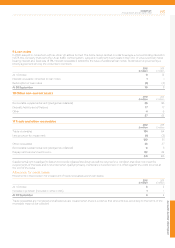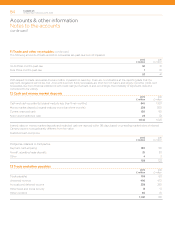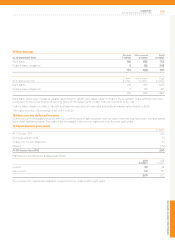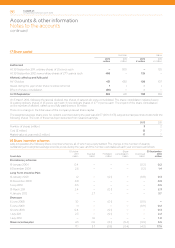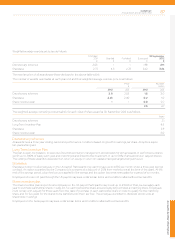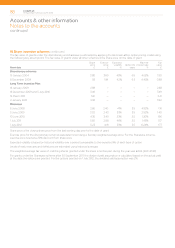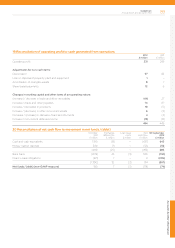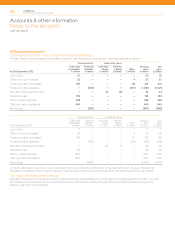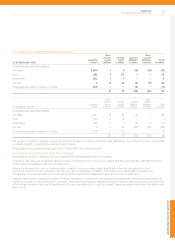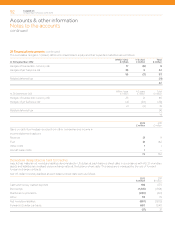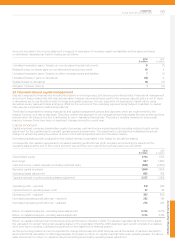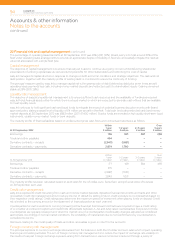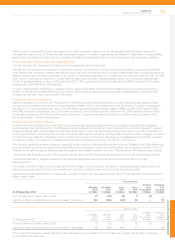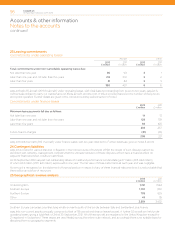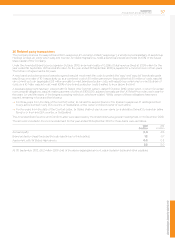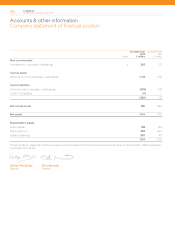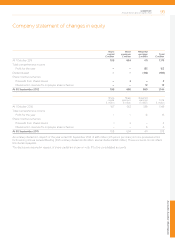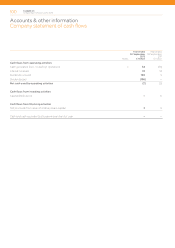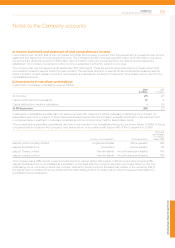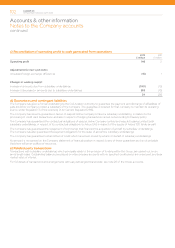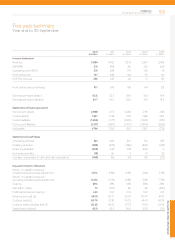EasyJet 2012 Annual Report Download - page 95
Download and view the complete annual report
Please find page 95 of the 2012 EasyJet annual report below. You can navigate through the pages in the report by either clicking on the pages listed below, or by using the keyword search tool below to find specific information within the annual report.
Amounts recorded in the income statement in respect of revaluation of monetary assets and liabilities and the gains and losses
on derivatives designated as held for trading are as follows:
2012
£ million
2011
£ million
Unrealised revaluation gains / (losses) on non-derivative financial instruments 8 (7)
Realised foreign exchange gains on non-derivative financial instruments 10 4
Unrealised revaluation gains / (losses) on other monetary assets and liabilities 7 (1)
Unrealised (losses) / gains on derivatives (16) 9
Realised losses on derivatives (8) (11)
Net gains / (losses) (note 2) 1 (6)
22 Financial risk and capital management
easyJet is exposed to financial risks including fluctuations in exchange rates, jet fuel prices and interest rates. Financial risk management
aims to limit these market risks with selected derivative hedging instruments being used for this purpose. easyJet policy is not to trade
in derivatives but to use the instruments to hedge anticipated exposure. As such, easyJet is not exposed to market risk by using
derivatives as any gains and losses arising are offset by the outcome of the underlying exposure being hedged. In addition to market
risks, easyJet is exposed to credit and liquidity risk.
The Board is responsible for setting financial risk and capital management policies and objectives which are implemented by the
treasury function on a day-to-day basis. The policy outlines the approach to risk management and also states the instruments and time
periods which the treasury function is authorised to use in managing financial risks. The policy is regularly reviewed to ensure best
practice, however there have been no significant changes during the current year.
Capital employed
Capital employed comprises shareholders’ equity, borrowings, cash and money market deposits (excluding restricted cash) and an
adjustment for the capital implicit in aircraft operating lease arrangements. The adjustment is calculated by multiplying the annual
charge for aircraft dry leasing by a factor of seven, in line with accepted practice for the airline industry.
Normalised operating profit is adjusted for the implied interest incorporated in the charge for aircraft dry leasing.
Consequently, the capital employed and normalised operating profit after tax (both excluding and including the adjustment for
operating leases) at the end of the current and prior year and the return earned during those years were as follows:
2012
£ million
2011
£ million
Shareholders’ equity 1,794 1,705
Borrowings 957 1,300
Cash and money market deposits (excluding restricted cash) (883) (1,400)
Reported capital employed 1,868 1,605
Operating leases adjustment 665 763
Capital employed including operating leases adjustment 2,533 2,368
Operating profit – reported 331 269
Implied interest in operating lease costs 32 36
Operating profit – adjusted 363 305
Normalised operating profit after tax – reported 252 199
Normalised operating profit after tax – adjusted 276 226
Return on capital employed – excluding leases adjustment 14.5% 12.7%
Return on capital employed – including leases adjustment 11.3% 9.8%
Return on capital employed was introduced as a key performance indicator in 2010. The decision was taken at the time not to adjust
the calculation for aircraft held under operating leases, in the expectation that the IASB’s leasing project would complete in a relatively
short time frame, resulting in all leases being shown on the statement of financial position.
As the accounting position is now not expected to change before easyJet’s 2016 financial year at the earliest, it has been decided to
amend the ROCE calculation to reflect appropriately the impact on return on capital of aircraft held under operating leases. The above
table shows both the return on capital employed excluding and including operating leases adjustment.
Accounts & other information
easyJet plc
Annual report and accounts 2012 93


